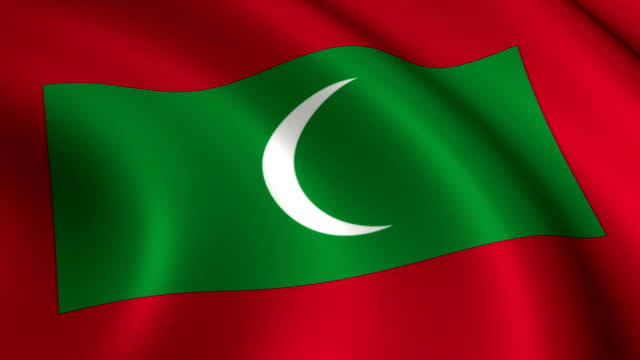About Maldives
Maldives officially the Republic of Maldives Dhivehi Raajjeyge Jumhooriyyaa, is an archipelagic state located in South Asia, situated in the Indian Ocean. It lies southwest of Sri Lanka and India, about 750 kilometres (470 miles; 400 nautical miles) from the Asian continent's mainland. The chain of 26 atolls stretches across the equator from Ihavandhippolhu Atoll in the north to Addu Atoll in the south.
Currency

The Maldivian rufiyaa is the currency of the Maldives. The issuance of the currency is controlled by the Maldives Monetary Authority. The most commonly used symbols for the rufiyaa are MVR and Rf. The ISO 4217 code for Maldivian rufiyaa is MVR. The rufiyaa is subdivided into 100 laari.
Climate
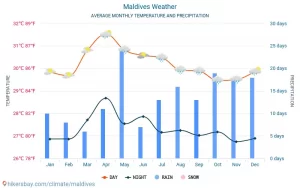
Maldives is characterized by a warm and humid tropical monsoon climate with an annual mean temperature of 28°C. The islands experience little variation in temperatures throughout the year. The seasonal cycle is strongest in the north recording an average maximum temperature of around 29.3°C just prior to the onset of the southwest monsoons (April-May) and an average minimum temperature of around 27.4°C prior to the onset of the northeast monsoons (December-January). The southern equatorial regions experience precipitation throughout the year and do not experience a very significant dry spell related to the northeast monsoons.
Language
Maldivian, also known by its endonym Dhivehi or Divehi, is an Indo-Aryan language spoken in the South Asian island country of Maldives and on Minicoy Island, Lakshadweep, union territory of India. The Maldivian language has notable dialects. The standard dialect is that of the capital city, Malé.
Economy
Since the 1970s the economy of the Maldives has developed rapidly. Annual growth of gross domestic product (GDP) has been high, averaging about 6 percent in the 2010s, and the gross national income (GNI) per capita—among the lowest in the world in the 1970s—reached the level of upper middle-income countries by the late 2010s. The economy is based on tourism, fishing, boatbuilding, and boat repairing, with the tourism sector driving the rapid growth.
Health
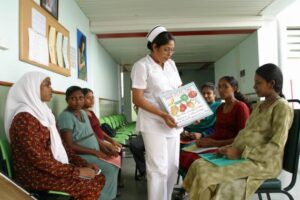
The most prevalent health concerns are cardiovascular diseases, cancer, diabetes, and renal failure. Certain food- and waterborne illnesses present a slight risk, such as hepatitis and typhoid. Malaria was eradicated in 1984, and the Maldives became the first country in the region to be certified as malaria-free by the World Health Organization in 2015. A health centre providing basic services can be found on each inhabited island, regardless of population size, and atolls typically have a higher-level facility or hospital on their capital island. Maldivians must go to Male for treatment of more serious ailments, however.
Education
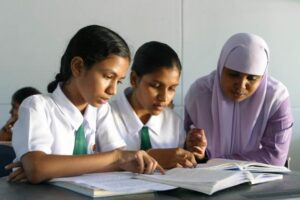
Three types of formal education are available in the Maldives, including traditional schools (makthabs) designed to teach the reading and reciting of the Qurʾān, Dhivehi-language schools, and English-language primary and secondary schools. The English-language schools are the only ones that teach a standard curriculum and offer secondary-level education. Nearly all children between the ages of 6 and 15 are enrolled in school at the primary or lower secondary levels, but enrollment drops significantly for higher secondary education. A handful of private institutions exist for higher education. The Maldives National University (formerly Maldives College of Higher Education) became the first public institution to offer a bachelor’s degree program in 2000; a limited number of degree programs became available over the years that followed. Maldivians seeking most types of degrees must go abroad.
Maldives Culture
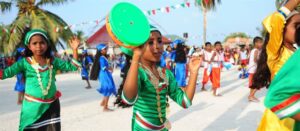
A beautiful slice of paradise in the Indian ocean, the Maldives is a fascinating destination. Steeped in rich culture and tradition, the Maldives culture is heavily shaped by Indian, Sri Lankan, Malaysia, Arab, Persian, Indonesian and even African influences. Maldivians are incredibly warm, welcoming and friendly people who will go above and beyond to make your holiday truly unforgettable. Read on to discover some interesting facts about the Maldives culture and useful information for your next Maldives holiday.
Religion
Islam is the major religion in the Maldives. This is most evident through the many beautiful mosques located on the main island of Malé as well as the lack of alcohol and pork available on the mainland. But not to worry, resorts have a special license to serve alcohol, so you can still enjoy cocktails and beachside beverages in tropical paradise.
Dress
With a predominately Muslim faith, Maldivians are quite conservative and wear traditional dress. Males wear a sarong and white cotton shirt, while females wear a traditional libaa which is a long dress with gold and silver thread. Guests must also be fully clothed while swimming at the beaches on the mainland unless swimming at a designated bikini beach. However, this rule does not apply at the resort islands and guests are free to soak up the sunshine in whatever swimming attire they please.
Food
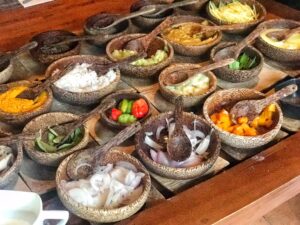
After tourism, the fishing industry drives the economy in the Maldives. You can expect to eat a lot of fresh tuna, snapper and lobster as well as a whole host of international cuisines on offer at your resort. Many resorts also offer all-inclusive holiday packages, so you can leave your wallet at home and indulge in a wide range of cuisines for breakfast, lunch and dinner. Traditional Maldivian food is hot and spicy and features a lot of curries, soups and dishes served with rice. Coconuts, yams, mangoes and pineapples are also locally grown and super delicious.
Music & Dance
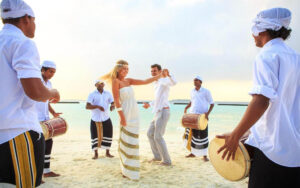
Music and dance are an integral part of Maldives culture and are heavily influenced by their surrounding nations. One of the most well-known Maldives performances is the “Bodu Beru”. The dance is performed by large groups of 15 to 20 men and features a range of drummers, dancers and singers. Many of the resorts organise regular cultural performances to entertain their guests, so be sure to check one out on your next Maldives holiday.



